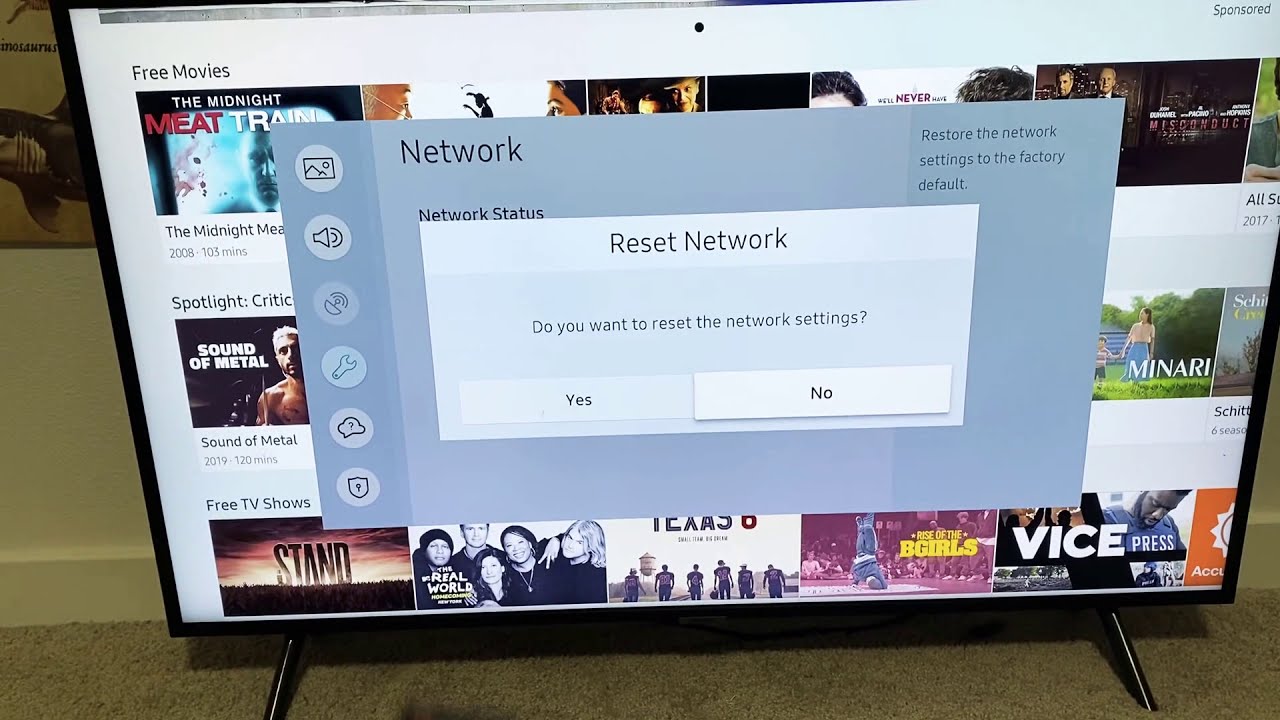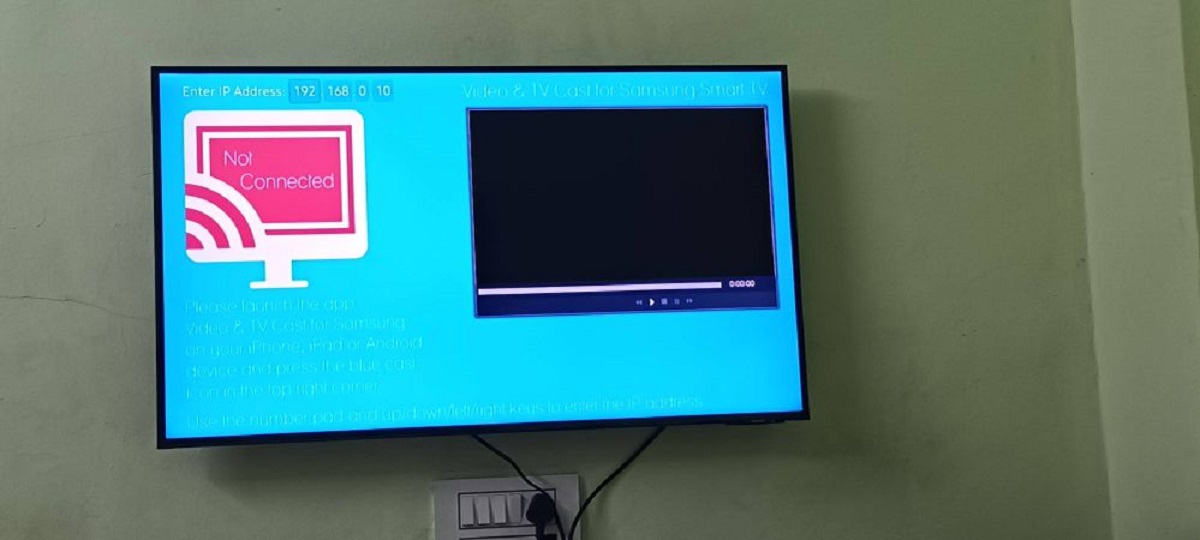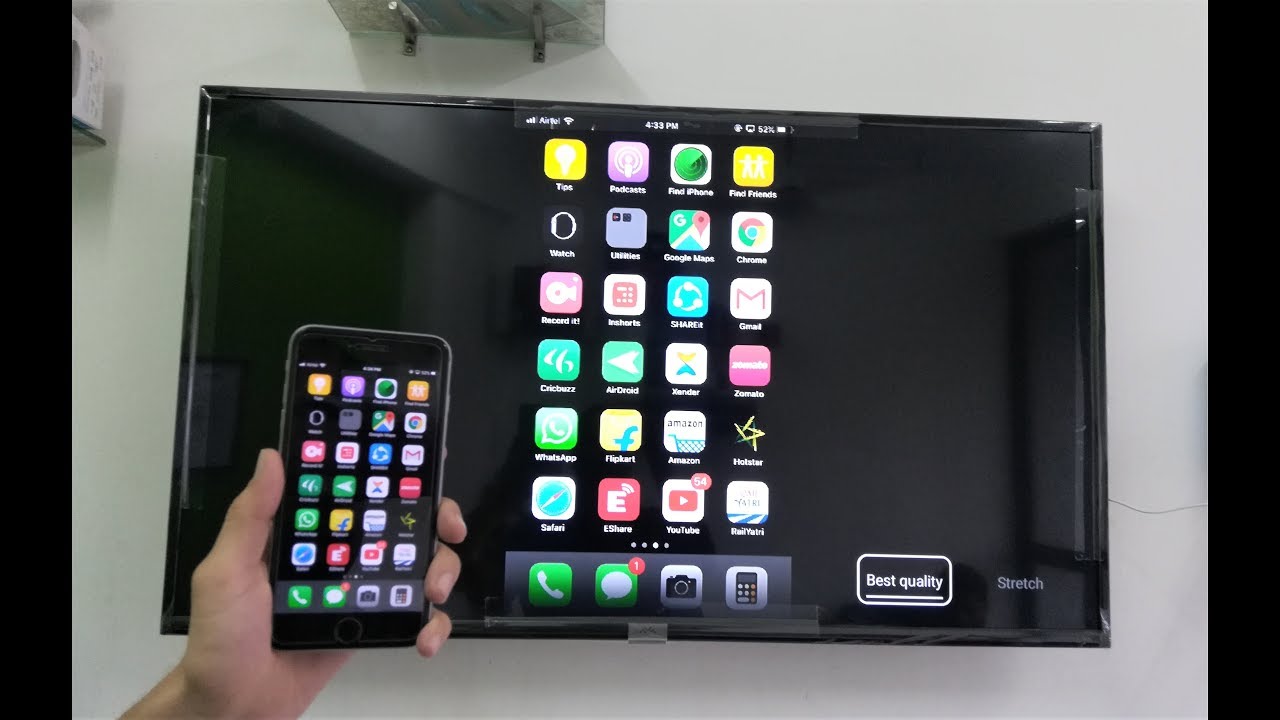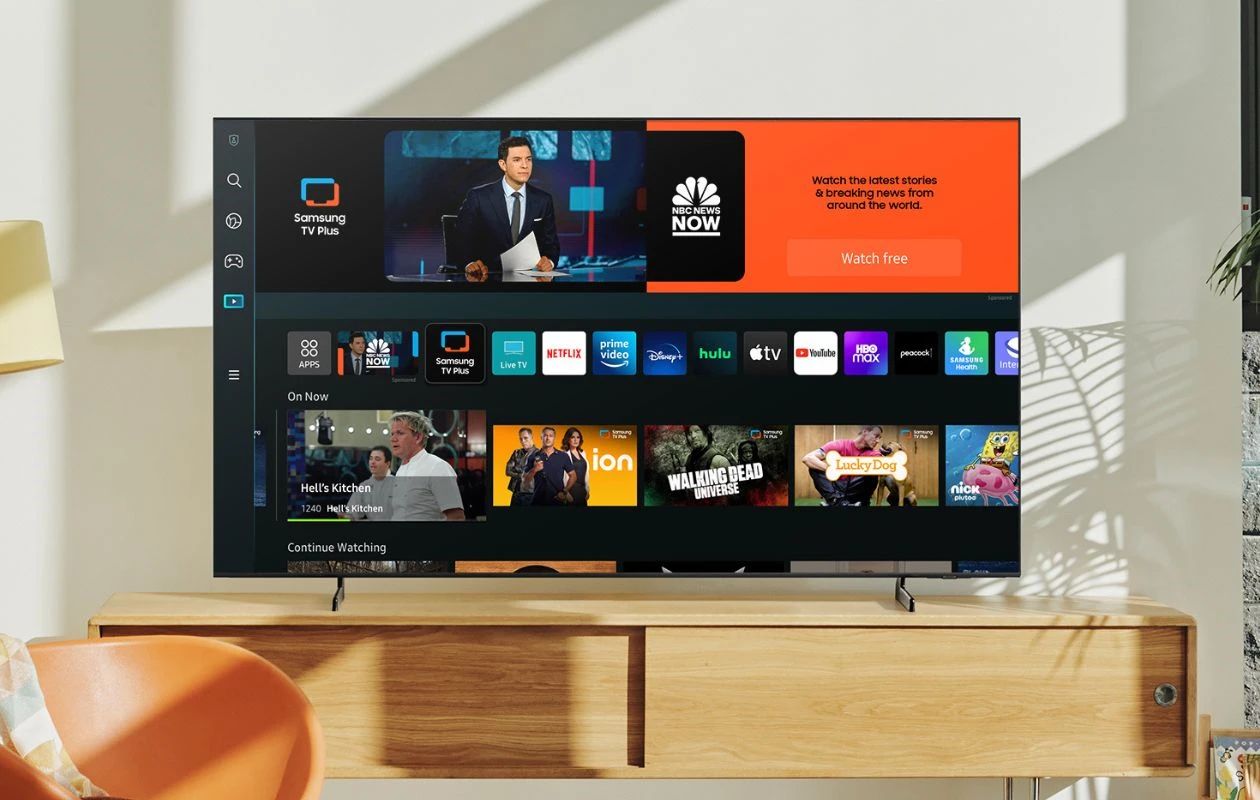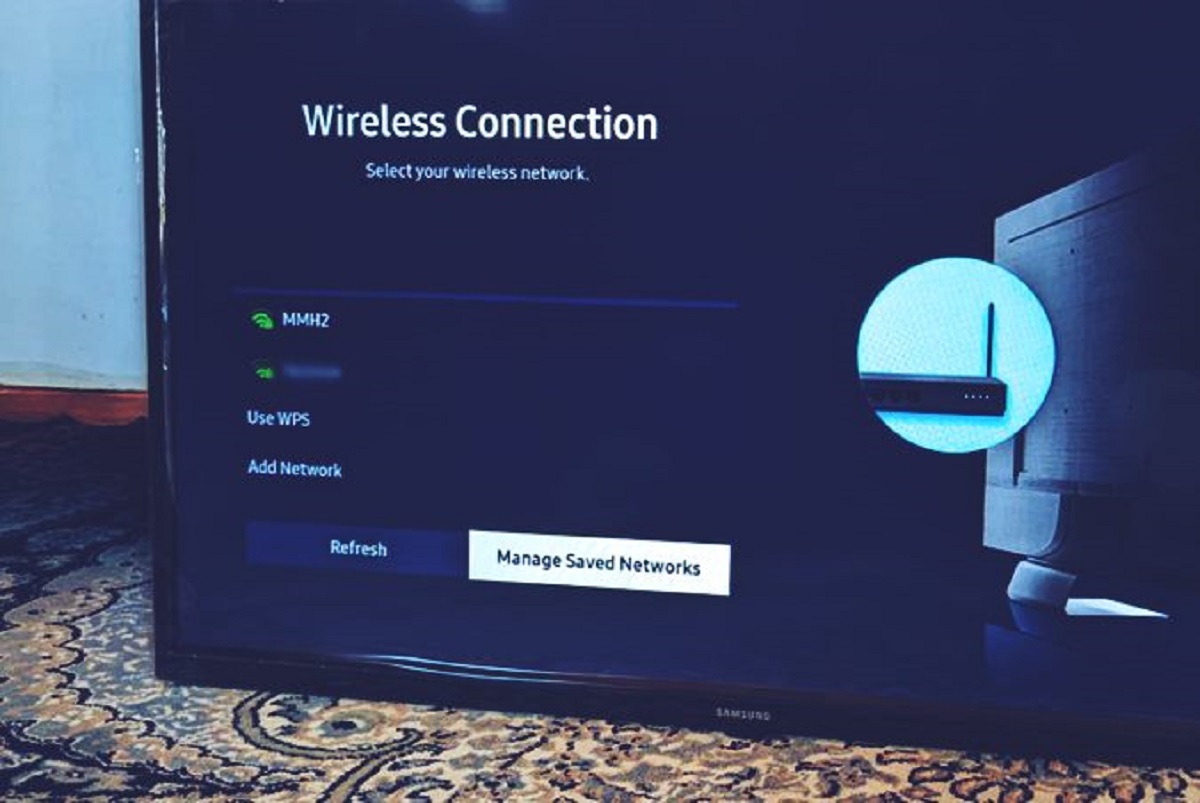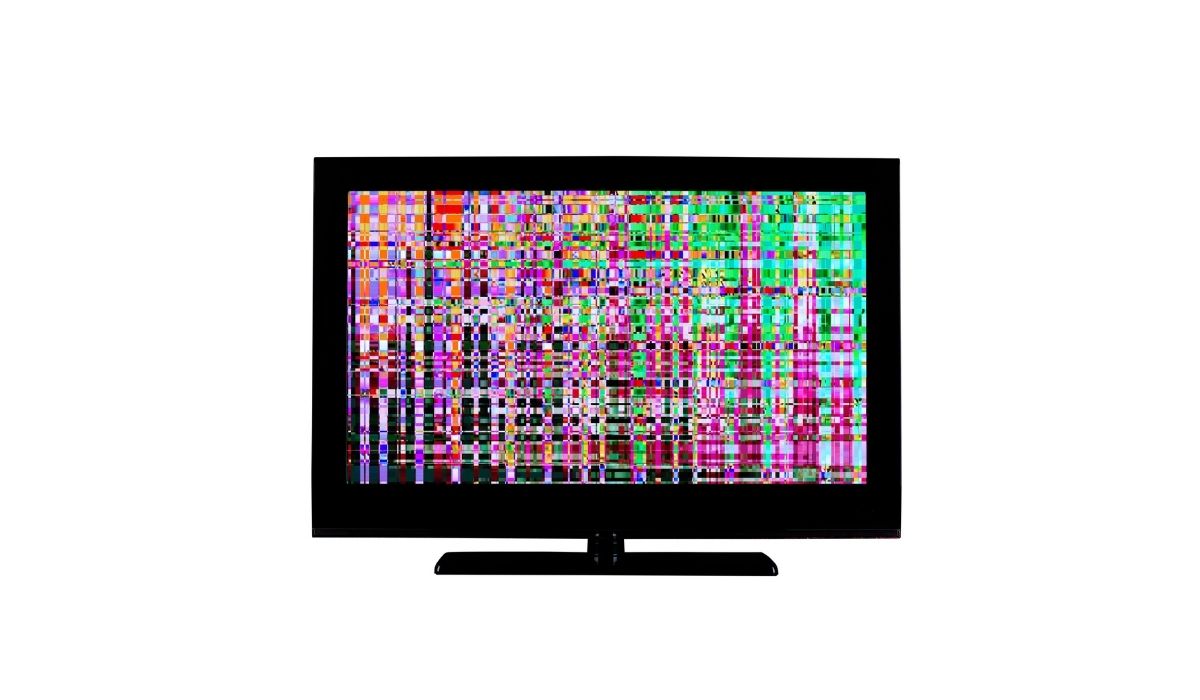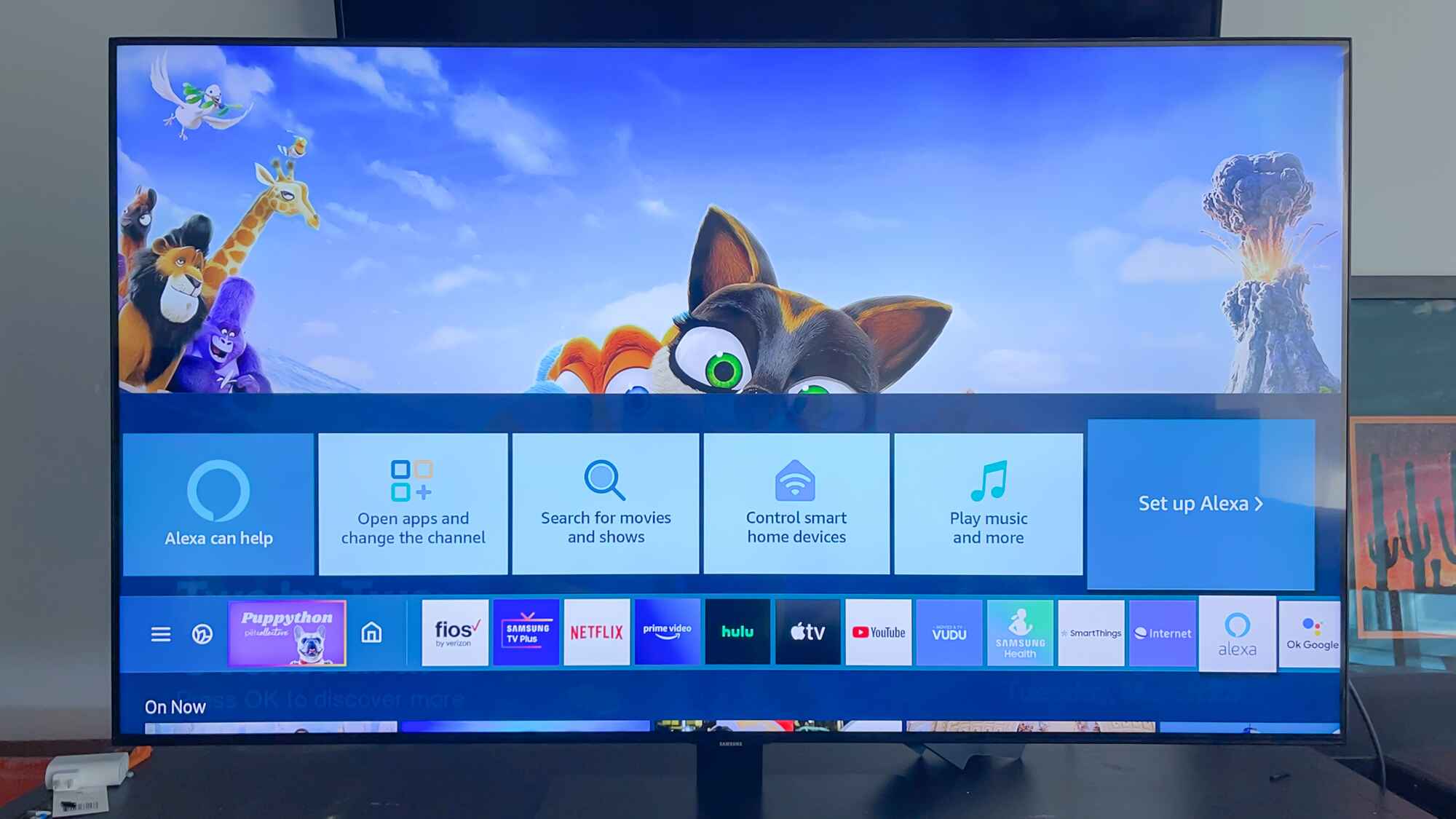Common Reasons for Samsung Smart TV Not Connecting to Wi-Fi
Having trouble connecting your Samsung Smart TV to Wi-Fi? Don’t worry, you’re not alone. There can be several reasons why your Smart TV is not connecting to the Wi-Fi network. Understanding these common issues can help you troubleshoot the problem effectively. Here are some possible reasons:
- Incorrect Wi-Fi Password: Double-check that you’ve entered the correct password for your Wi-Fi network. It’s easy to make a typo or mistake when entering a long and complex password.
- Weak Wi-Fi Signal: If your Samsung Smart TV is located far away from your Wi-Fi router or in a room with thick walls, the Wi-Fi signal strength might be weak. Make sure the TV is within range of the router and try moving it closer for a stronger signal.
- Router Issues: Sometimes, the problem lies with the router itself. Check if other devices in your home are also experiencing connectivity issues. If they are, try restarting the router or contacting your internet service provider for assistance.
- Network Compatibility: Ensure that your Smart TV supports the frequency band (e.g., 2.4GHz or 5GHz) and security protocols (e.g., WEP, WPA) used by your Wi-Fi network. Some older models may not support newer Wi-Fi standards.
- Software or Firmware Update: Outdated software or firmware on your Smart TV could also be causing connectivity problems. Check for any available updates and install them to ensure optimal performance.
- Interference: Other electronics or devices near your Smart TV or Wi-Fi router could be causing interference, disrupting the Wi-Fi signal. Keep your TV and router away from devices like cordless phones, microwave ovens, and Bluetooth speakers.
These are just a few common reasons why your Samsung Smart TV may not be connecting to Wi-Fi. By considering these factors, you can troubleshoot the problem and hopefully regain a stable connection. If the issue persists, move on to the next section for troubleshooting steps to resolve Wi-Fi connectivity issues on your Samsung Smart TV.
Troubleshooting Steps for Samsung Smart TV Wi-Fi Connectivity Issues
If your Samsung Smart TV is facing Wi-Fi connectivity issues, you can follow these troubleshooting steps to resolve the problem:
- Restart the TV: Sometimes, a simple restart can fix minor connectivity issues. Turn off your Samsung Smart TV, unplug it from the power source, wait for a few minutes, and then plug it back in. Turn on the TV and check if the Wi-Fi connection is stable.
- Restart the Router: Similar to the TV, your Wi-Fi router may benefit from a restart. Unplug the router from the power source, wait for a minute or two, and then plug it back in. Give it a few minutes to fully reboot, and then check if the Smart TV can connect to Wi-Fi.
- Check Network Settings: Go to the network settings menu on your Samsung Smart TV and make sure the Wi-Fi is turned on. Verify that the network name (SSID) and password are entered correctly. If necessary, re-enter the Wi-Fi password to ensure accuracy.
- Move the TV Closer to the Router: If your Smart TV is located far away from the router, the Wi-Fi signal may be weak. Try moving the TV closer to the router, especially if there are physical obstacles, such as walls or furniture, blocking the signal.
- Reset Network Settings: Resetting the network settings on your Samsung Smart TV can help resolve any conflicts or configuration issues. From the network settings menu, look for the option to reset or initialize network settings. Keep in mind that this will remove any saved Wi-Fi networks, so you’ll need to reconnect to your desired network.
- Update Firmware: Check if there are any available firmware updates for your Samsung Smart TV. Manufacturers often release updates to address known issues and improve device performance. Navigate to the settings menu, look for the software update section, and follow the on-screen instructions to update the firmware if available.
- Contact Samsung Support: If none of the above steps resolve the issue, it’s best to reach out to Samsung support for further assistance. They have dedicated support channels to help troubleshoot Smart TV connectivity problems and provide specific solutions for your model.
By following these troubleshooting steps, you can increase the chances of resolving Wi-Fi connectivity issues on your Samsung Smart TV. Remember to always check for updates and reach out for support if necessary. Now you can enjoy seamless streaming and internet browsing on your Smart TV once again.
Check Wi-Fi Network Settings on the Samsung Smart TV
When your Samsung Smart TV is not connecting to Wi-Fi, checking the network settings on the TV can help identify and resolve any configuration issues. Follow these steps to check the Wi-Fi network settings:
- Access the Menu: Using your TV remote, press the Menu button to access the main settings menu on your Samsung Smart TV.
- Open Network Settings: Navigate to the Network section within the settings menu. This may be labeled as “Network & Internet,” “Network Settings,” or similar options depending on your TV model.
- Select Wireless: Within the network settings, choose the wireless (Wi-Fi) option to view and modify the Wi-Fi network settings.
- Verify Wi-Fi Status: Check if the Wi-Fi is enabled or turned on. If it’s currently disabled, toggle the switch to enable Wi-Fi connectivity.
- Confirm Network Name and Password: Ensure that the network name (also known as SSID) matches the Wi-Fi network you wish to connect to. Double-check that the password is entered correctly. If there are any mistakes, re-enter the network name and password accurately.
- Advanced Settings: Some Samsung Smart TVs offer advanced Wi-Fi settings options. If available, you can access these settings to adjust specific parameters such as IP settings, DNS settings, or DHCP settings. However, it’s recommended to leave these settings as default unless you have specific knowledge or troubleshooting instructions.
- Run Network Test: Many Samsung Smart TVs have a built-in network test or diagnostic tool. Use this feature to analyze the current network connection and identify any potential issues. The test can check the signal strength, latency, and other network parameters to provide insights into the Wi-Fi connectivity status.
- Reset Network Settings: If you’re still experiencing issues, you can try resetting the network settings on your Samsung Smart TV. This will revert all network settings to their default values. However, note that this will also erase any saved Wi-Fi networks, so you’ll need to reconnect once the TV restarts.
By checking and adjusting the Wi-Fi network settings on your Samsung Smart TV, you can ensure that the correct network is selected and the password is entered accurately. Running a network test and resetting the network settings if necessary can further help resolve any connectivity issues. If the problem persists, proceed to the next troubleshooting steps for additional solutions.
Restart the Router and Samsung Smart TV
One of the simplest yet effective troubleshooting steps for resolving Wi-Fi connectivity issues with your Samsung Smart TV is to restart both the router and the TV itself. Restarting these devices can help clear temporary glitches and refresh the network connection. Here’s how to do it:
- Restart the Router: Locate the power cord of your Wi-Fi router and unplug it from the electrical outlet. Wait for about 10 to 15 seconds, then plug it back in. Give the router a few minutes to fully reboot and reconnect to the internet. This process can help resolve any network-related issues that may be affecting the connection with your Smart TV.
- Restart the Samsung Smart TV: Using your TV remote, press the power button to turn off your Samsung Smart TV. Once it’s turned off, unplug the TV from the power source. Leave it unplugged for at least 30 seconds to ensure all residual power is drained. After the specified time, plug the TV back into the power source and turn it on using the remote or power button on the TV itself.
- Wait for Reconnection: After restarting both the router and the Smart TV, allow them a few minutes to reconnect to each other and establish a stable Wi-Fi connection. This may take a few minutes, so be patient during this process.
- Verify Wi-Fi Connection: Once the router and TV have restarted and reconnected, check if the Wi-Fi connection on your Samsung Smart TV is stable. Access the network settings menu on the TV and ensure that the appropriate Wi-Fi network is selected and that the signal strength is adequate.
- Refresh Network Settings: In some cases, restarting the router and TV may not be enough. To further ensure a fresh connection, you can also go to the network settings menu on your Samsung Smart TV and choose the option to refresh or re-scan for available Wi-Fi networks. This can help the TV detect and connect to the router more reliably.
By restarting both the router and Samsung Smart TV, you can refresh the network connection and potentially resolve any temporary network glitches. This simple troubleshooting step can often fix minor Wi-Fi connectivity issues. If the problem persists, proceed to the next troubleshooting steps for further solutions.
Ensure the Samsung Smart TV is within Range of the Wi-Fi Signal
When troubleshooting Wi-Fi connectivity issues with your Samsung Smart TV, it’s crucial to ensure that the TV is within the range of the Wi-Fi signal. The distance between the TV and the wireless router, as well as any physical obstructions, can affect the strength and stability of the connection. Here are some steps to follow:
- Check Signal Strength: Access the network settings menu on your Samsung Smart TV and look for the signal strength indicator. Ensure that the signal strength is strong enough for a reliable Wi-Fi connection. If the signal strength is weak or fluctuating, it indicates that the TV may be too far away from the router.
- Move the TV Closer: If the signal strength is weak, try moving the Samsung Smart TV closer to the wireless router. Ideally, the TV should be within a reasonable range for optimal connectivity. Consider rearranging the furniture or adjusting the placement of the TV to minimize obstructions and improve the Wi-Fi signal reception.
- Minimize Physical Obstacles: Physical obstacles such as walls, metallic objects, and large appliances can weaken the Wi-Fi signal. Ensure that there are no major obstructions between the Smart TV and the router. If possible, avoid placing the router near objects or appliances that can interfere with the signal, such as microwaves or cordless phones.
- Use a Wi-Fi Extender/Repeater: If moving the TV closer to the router is impractical or doesn’t solve the issue, you can consider using a Wi-Fi extender or repeater. These devices can help amplify and extend the Wi-Fi signal, ensuring better coverage throughout your home. Place the extender or repeater strategically between the router and the TV to boost the signal in that area.
- Consider a Wired Connection: If all else fails, you may want to consider using a wired connection instead of relying on Wi-Fi for your Samsung Smart TV. This can provide a more stable and reliable connection, especially for activities that require high bandwidth, such as streaming 4K videos or online gaming. Connect an Ethernet cable directly from the router to the TV’s Ethernet port for a wired connection.
By ensuring that your Samsung Smart TV is within the range of the Wi-Fi signal, you can enhance the stability and performance of the connection. Follow these steps to improve the signal strength and minimize any potential obstacles that may be affecting connectivity. If the issue persists, proceed to the next troubleshooting steps for additional solutions.
Reset Network Settings on the Samsung Smart TV
If you’re experiencing persistent Wi-Fi connectivity issues with your Samsung Smart TV, resetting the network settings can often help resolve any conflicts or configuration problems. Resetting the network settings erases all saved Wi-Fi networks and allows you to start afresh. Here’s how to reset the network settings on your Samsung Smart TV:
- Access the Settings Menu: Using your TV remote, navigate to the main settings menu on your Samsung Smart TV. The location of the settings menu may vary depending on your TV model, but it is usually represented by a gear or settings icon.
- Open Network Settings: Within the settings menu, look for the network settings option. It may be labeled as “Network & Internet,” “Network Settings,” or something similar.
- Find the Network Reset Option: In the network settings menu, search for the option to reset or initialize network settings. This option may be located under an “Advanced Settings” or “General” section.
- Confirm Reset: Select the network reset option and follow the on-screen prompts to confirm the reset process. Be aware that resetting the network settings will remove all saved Wi-Fi networks, so you’ll need to reconnect to your desired network afterward.
- Reconnect to Wi-Fi: Once the network settings have been reset, go back to the network settings menu and select the appropriate Wi-Fi network. Enter the Wi-Fi password, if required, to reconnect your Samsung Smart TV to the network.
- Run Network Test: After reconnecting to the Wi-Fi network, it’s a good idea to run a network test or check the network status on your Samsung Smart TV. This will help verify if the reset has successfully resolved the connectivity issues and if the Wi-Fi connection is stable.
Resetting the network settings on your Samsung Smart TV can be an effective solution for resolving persistent Wi-Fi connectivity issues. By starting with a fresh network setup, you can eliminate any previous configuration problems. Remember to reconnect to your Wi-Fi network and test the connection afterward. If the problem persists, proceed to the next troubleshooting steps for further solutions.
Verify if Other Devices Can Connect to Wi-Fi
If your Samsung Smart TV is having trouble connecting to Wi-Fi, it’s important to determine whether the issue is specific to the TV or if it’s a broader Wi-Fi problem. One way to do this is by checking if other devices can connect to the Wi-Fi network. Here’s how:
- Check Other Devices: Take a moment to identify other devices in your home that rely on Wi-Fi for internet connectivity. This could include smartphones, tablets, laptops, or other smart devices.
- Connectivity Test: Choose one of the devices and attempt to connect it to the Wi-Fi network in question. If the device successfully connects and can access the internet, it suggests that the Wi-Fi network itself is operational.
- Observe Other Devices: Once connected, observe the performance and stability of the Wi-Fi connection on the other device. Check if the internet speed is satisfactory, if there are any intermittent disconnections, or if there are other issues affecting the connection.
- Compare Results: Compare the performance of the other devices to the connectivity issues experienced with your Samsung Smart TV. If the other devices are experiencing similar problems or the Wi-Fi connection is unstable, it indicates a problem with the Wi-Fi network.
- Restart Router: If other devices are also affected by connectivity issues, restart the Wi-Fi router. Unplug it from the power source, wait for a minute or two, and plug it back in. Allow the router to fully reboot, and then test the Wi-Fi connection again on the other devices.
By verifying if other devices can connect to the Wi-Fi network, you can determine if the issue lies with the specific Samsung Smart TV or if it’s a broader Wi-Fi problem. If other devices are also experiencing connectivity issues, restarting the router can help resolve the problem. However, if other devices connect without any problems, proceed to the next troubleshooting steps for the Samsung Smart TV specifically.
Update the Firmware on the Samsung Smart TV
If your Samsung Smart TV is experiencing Wi-Fi connectivity issues, it’s essential to ensure that the firmware on the TV is up to date. Firmware updates often include bug fixes, performance improvements, and compatibility enhancements that can help resolve Wi-Fi problems. Follow these steps to update the firmware on your Samsung Smart TV:
- Check the Current Firmware Version: Start by finding out the current firmware version on your Samsung Smart TV. Go to the TV’s settings menu; the exact location may vary depending on your TV’s model.
- Access the System or About Section: Look for options like “System” or “About” within the settings menu. Navigate to this section to find information about the TV’s current firmware version.
- Check for Firmware Updates: Once you have located the firmware information, find the option to check for updates. This can be labeled as “Software Update,” “System Update,” or a similar term. Select this option to check if a newer firmware version is available.
- Download and Install the Firmware Update: If a firmware update is available, follow the on-screen prompts to download and install it. Note that the update process may take some time, and the TV may restart multiple times during the installation.
- Wait for the Firmware Update to Complete: Once the firmware update is downloaded and installed, wait for the process to complete. Do not turn off the TV or disconnect it from the power source during this time.
- Verify the Updated Firmware: After the TV restarts, go back to the system or about section in the settings menu to confirm that the firmware has been updated to the latest version.
- Reconnect to Wi-Fi: Once the firmware update is complete, go to the network settings menu and reconnect your Samsung Smart TV to the Wi-Fi network. Enter the Wi-Fi password if prompted.
- Check Wi-Fi Connectivity: Test the Wi-Fi connection on your Samsung Smart TV to ensure that the firmware update has resolved any Wi-Fi connectivity issues. Monitor the stability and performance of the connection to ensure that it remains stable.
By updating the firmware on your Samsung Smart TV, you can take advantage of bug fixes and enhancements that may resolve Wi-Fi connectivity problems. Regularly checking for firmware updates ensures that your TV is equipped with the latest features and improvements. However, if the issue persists, proceed to the next troubleshooting steps for additional solutions.
Contact Samsung Support for Further Assistance
If you have exhausted all troubleshooting steps and are still facing Wi-Fi connectivity issues with your Samsung Smart TV, it may be time to seek further assistance. Contacting Samsung support can provide you with personalized solutions and expert guidance to resolve the problem. Here’s how to reach out for assistance:
- Visit the Samsung Support Website: Start by visiting the official Samsung support website. Look for the support section or a dedicated page for TV-related issues.
- Find the Contact Information: Navigate to the contact or customer support page on the website. Look for the phone number, email address, or live chat option to connect with a Samsung representative.
- Prepare Relevant Information: Before contacting support, gather important information about your Samsung Smart TV, such as the model number, current firmware version, and a detailed description of the Wi-Fi connectivity issues you are experiencing. This will help the support team better understand your problem.
- Contact Samsung Support: Reach out to Samsung support via phone, email, or live chat, depending on the available options. Explain your issue and provide the relevant information you gathered earlier. Be prepared to follow any troubleshooting steps or instructions provided by the support representative.
- Follow Support Guidance: Samsung support will guide you through specific troubleshooting steps tailored to your TV model and situation. Follow their instructions carefully and provide any requested information or feedback throughout the support process.
- Consider Service Options: If the support team determines that there may be a hardware issue with your Samsung Smart TV, they may suggest service options such as in-home repairs or sending the TV to an authorized service center. Follow their recommendations to ensure a proper resolution to the problem.
Contacting Samsung support can provide you with specialized assistance to resolve Wi-Fi connectivity issues with your Smart TV. Their knowledge and expertise can help identify the root cause of the problem and provide you with appropriate solutions or service options. Don’t hesitate to reach out for assistance if you have exhausted all other troubleshooting steps.









